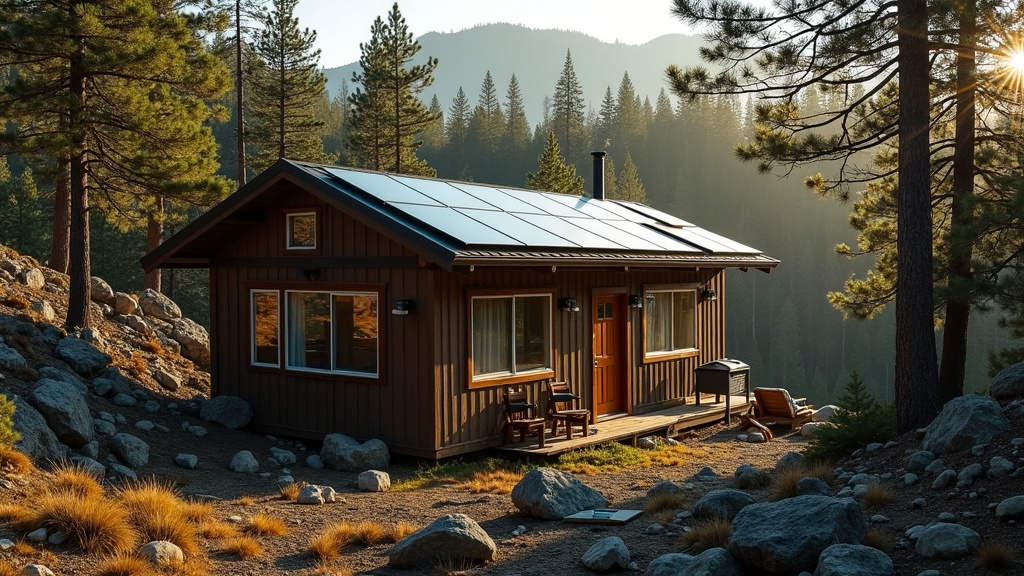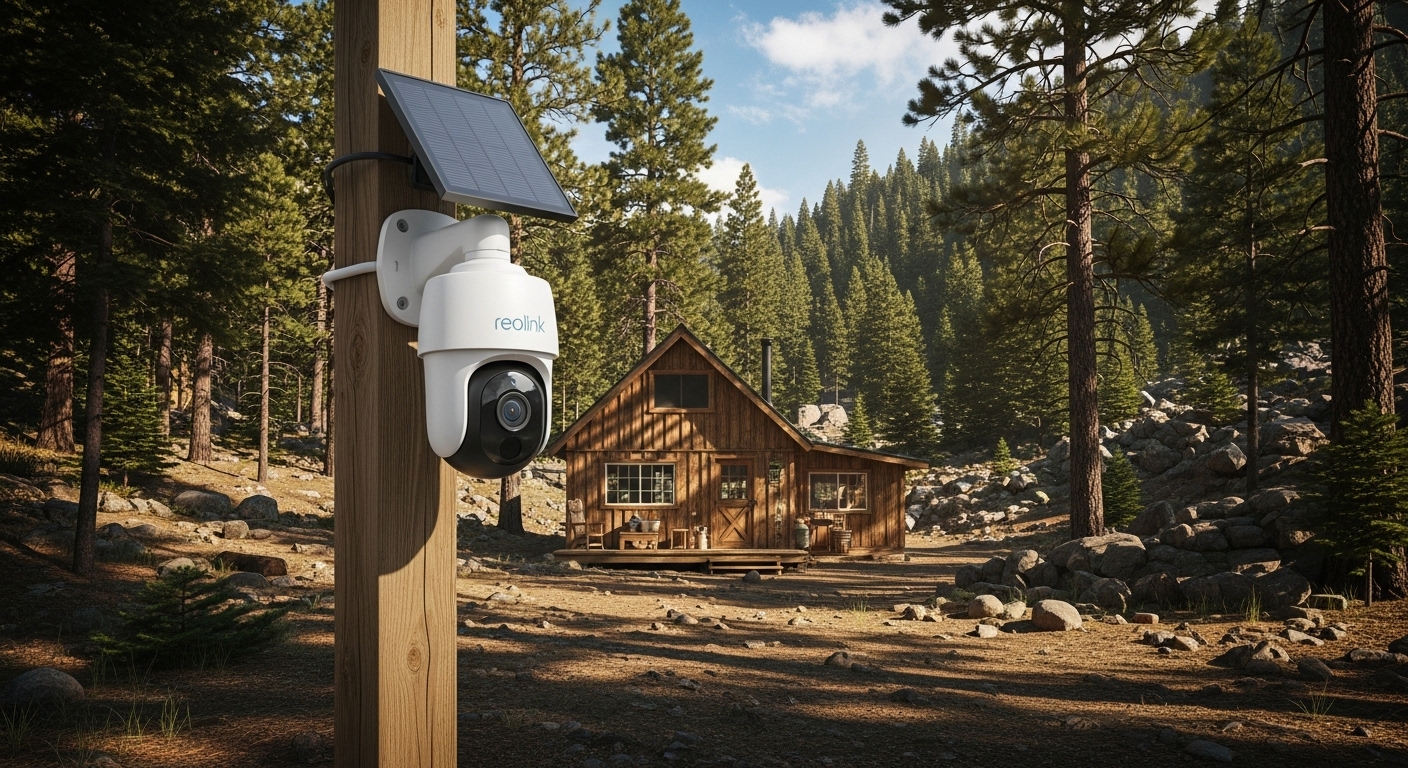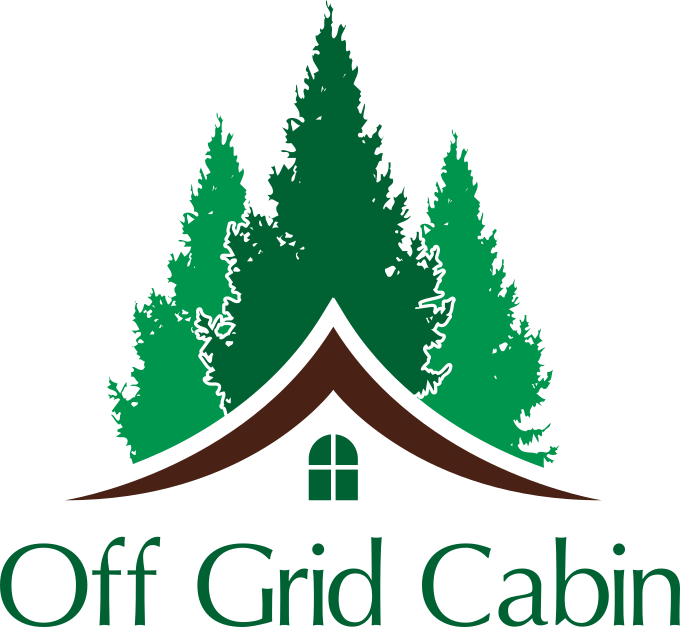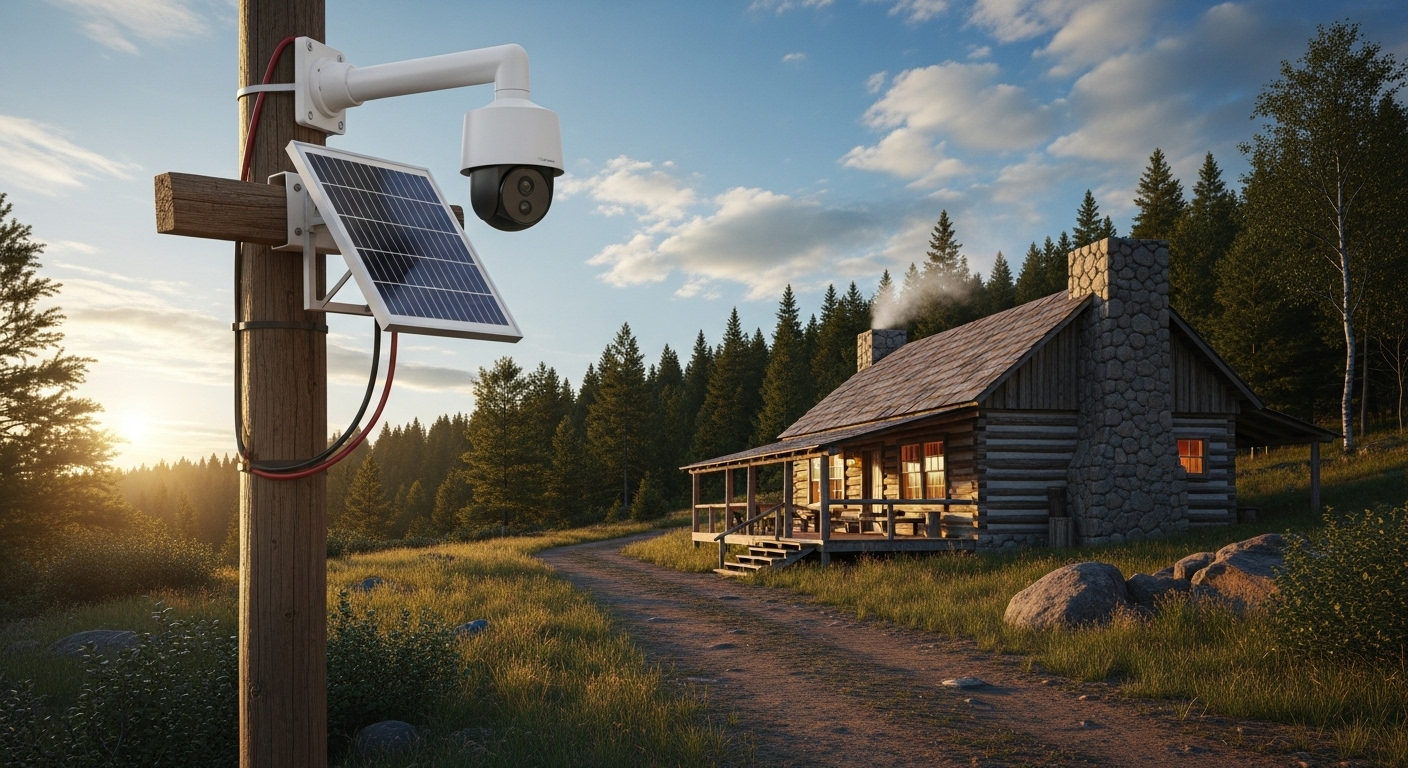Living off the grid brings a lot of freedom, but it also means handling your own security instead of depending on city services. Making sure your home and property are safe is really important when you’re far from neighbors, don’t have quick access to police, and sometimes can’t get a cell signal. Over the years, I’ve explored a lot of ways to keep off-grid homes secure, and I’m happy to share what works, and what’s worth avoiding, so you can rest easier, no matter how remote your spot is.

Understanding Off-Grid Home Security Systems
When you’re off the grid, picking up a quick plug and play security setup from a big box store won’t usually suit your needs. You have to work with limited or alternative power sources, and you need equipment that can operate independently from the internet, public utilities, or cell networks. Off-grid security means tracking down systems that run on solar, wind, or battery power—and making sure they stay functional even in stormy weather or during power hiccups.
The steady growth in the home security market reveals just how motivated people are to protect their homes, not only in cities but out in rural places, too. A lot of off-grid setups use a do-it-yourself approach or gear that’s built for rugged environments. There’s a noticeable shift toward systems you can monitor yourself. These use local alarms, radio-based alerts, or secure wireless notifications that don’t depend on outside infrastructure.
Key Components of an Off-Grid Security System
Most off-grid setups mix foundational methods with some technology. The key is to scare off trouble and receive rapid alerts if something seems off. Here’s what most off-grid homeowners (myself included) rely on:
- Solar Powered Cameras: Cameras equipped with solar cells, so there’s no need to rely on the grid. They usually store video on local drives or send notifications over low-data networks.
- Motion Sensors: Battery or solar-powered motion sensors are easy to set up around driveways, paths, entry doors, or windows. Some use radio transmitters for long-range alerts.
- Loud Sirens: Extra-loud alarms scare off intruders and alert anyone nearby. I run a siren on my property connected to motion sensors via 12-volt deep-cycle batteries.
- Reinforced Locks and Barriers: Heavy padlocks, steel bars, tough doors, and strong fencing. Old school, but it works even better when surveillance is in play.
- Gate Alarms: Wireless driveway and gate alarms let you know anytime someone or a vehicle crosses your boundaries. These have tipped me off to unexpected guests plenty of times.
Setting Up an Off-Grid Security System
Choosing and installing your security gear is all about what works with your off-grid power sources, plus the unique land around your home. These steps have served me and plenty of my off-grid friends very well:
- Figure Out Power Needs: Calculate the energy needs for your cameras, sensors, and alarms. This helps you size up your solar or wind system to keep everything charged.
- Pick Weatherproof Equipment: Buy cameras and sensors that are rated for harsh conditions like rain, snow, and major temperature shifts. Always check the operating temperature range before you buy.
- Test the System Before Going Fully Live: In my experience, testing sensors and cameras in their permanent spots uncovers surprises—signal dropouts, poor angles, or weak batteries.
- Automate Where Possible: Timers, smart relays, and compact control panels can make it easy to handle lighting, alarms, and status checks. This cuts down on daily hassles.
- Set Up Remote Monitoring: If you have even limited cell or satellite coverage, find cameras or alarms that send notifications to your phone or email. Many trail cameras manage this with very light data use.
Challenges With Off-Grid Security (And Practical Solutions)
Off-grid life brings some unique security hurdles that city setups don’t usually face. Here are the main issues I’ve handled—and my solutions:
- Limited Power: Sun is unreliable some days. To deal with this, I keep spare batteries charged and use a combined solar and wind arrangement. In particularly cloudy stretches, I limit power use to essentials—like core alarms and one camera per main entry.
- No Fast Internet: I record security footage locally on SD cards. For notifications, I rely on trail cameras or text-based alerts through cellular boosters—when any coverage is available.
- Physical Tampering: Hiding cameras higher up or in camouflaged cases helps. Running cables through metal conduit cuts down on the risk they get snipped, and some alarms will trigger if jostled or tampered with.
- False Alarms from Wildlife: Using sensors with sensitivity adjustments or switching to beam sensors solves the animal problem. Testing these with your local wildlife (like curious deer or roaming dogs) makes a big difference.
Power Solutions for Off Grid Security
For most off grid situations, solar panels are the go-to if you get enough sunlight. Teaming them up with a reliable charge controller and leadacid or lithium iron phosphate batteries keeps your system running rain or shine. If wind is a steady resource where you live, a compact wind turbine boosts up-time, especially during winter months full of storms and darkness.
Some off gridders also use manual backup like pedal-powered generators or keep a gas generator around for emergency juice. These extras can keep your setup running during ultra-long stretches of rough weather or heavy surveillance use.
Reliable Local Storage
Depending on the cloud isn’t realistic off-grid. Local SD cards or hard drives (sealed in weatherproof boxes if you don’t have conditioned space) allow you to save video even if your internet vanishes. I know a few folks who go the extra mile and hide a backup recorder somewhere tough for thieves to find—peace of mind if the worst happens.
Popular Equipment for Off-Grid Security
If you’re curious about which brands and products get the most love in off-grid communities, this breakdown will help you compare options, plus the reasons for their popularity:

- Reolink Go PT Plus: 4G LTE, solar charging, pan/tilt, local recording—great for spots with some mobile signal.
- Arlo Go 2: Works on either WiFi or cellular, weatherproof, records sharp videos. It comes with rechargeable or solar power options.
- Guardline Wireless Driveway Alarm: Flexible detection zones, really impressive range (over a quarter of a mile if you have clear sightlines), runs on AA batteries or solar.
- EufyCam 3: Completely wire free, long battery life, can charge with solar, no monthly fees for storage.
- Basic Trail Cameras (Browning, Bushnell): Motion-activated, stays hidden at night, many models send photos by text when you find a cell signal that works.
Practical Tips for Off-Grid Home Security
Locking down your off-grid place doesn’t need to eat up your budget. Routine and layout matter as much as any gadgetry. Here’s what works for peace of mind:
Place Cameras Strategically: Aim to cover gates, doors, and every route up to your house. Mount cameras high out of reach and avoid aiming into bright sunlight—glare wrecks night and day visibility.
Don’t Forget Signs: Plain “This Property is Monitored” signs still scare off some would-be troublemakers. I hang them on my approach road and main fence, just to let everyone know I’m paying attention.
Use Layers: Basic fencing, secure gates, a loyal dog, and simple outdoor lighting make things complicated for anyone trying to sneak around. It’s about making each barrier buy you time.
Keep Emergency Contacts Ready: Know who counts in a crunch—sheriffs, rangers, nearby residents, or local fire services. Having their info written down and handy is key when cell service is spotty.
Common Questions About Off-Grid Home Security
People often ask me a few standard questions when setting up off-grid security. Here’s what comes up most often, along with how I usually answer:
Can I have effective security even if there’s no reliable internet or cell service?
Answer: Sure can! Lots of setups work just fine on their own, with sirens, SD card recording, and short-range radio alerts. Cellular trail cams step up for remote alerts if there’s even a hint of signal.
What’s the best backup power for long gloomy stretches?
Answer: Deep-cycle batteries, paired with both solar and wind, keep things humming. I also suggest a portable generator as extra insurance—handy for emergencies.
How do I dodge constant false alarms from animals?
Answer: Adjustable sensor sensitivity and using beam alarms (that only activate when a solid object crosses the path) fix this up. Always give your sensors a dry run with local wildlife and pets to iron out bugs.
Picking the Right Setup for Your Needs
It’s smartest to start with the basics, like alarms on all main entries and one or two locally recording cameras. Build up from there—driveway sensors, repeaters, smart power switches—as your space or concerns grow.
There’s no quick fix, but with well-thought-out gear and solid installation, your off-grid place can be every bit as safe as a city home. Staying active, checking gear regularly, and tinkering as things change will keep your home a secure base for all your upcoming adventures. Bottom line: a bit of planning goes a long way in making off-grid living safe and stress-free.
© 2025, Teresa. All rights reserved.


True, Teresa. This is a solid guide for anyone living off the grid. I once stayed in a rural village where our only “security system” was dogs and neighbors who never slept deeply. Reading your piece reminds me how technology has changed safety without stealing self-reliance.
As we say, “An army of sheep led by a lion can defeat an army of lions led by a sheep.”
John
Thank you, John — I love that saying! It’s so true that strong leadership and awareness make all the difference, whether it’s a village watch or an off-grid homestead. Technology has definitely added new layers of security, but like you said, it’s that spirit of community and vigilance that truly keeps us safe. Appreciate your insight!
Fantastic post, Teresa! You’ve nailed the balance between practicality and independence that off-grid living requires. I really appreciate how you emphasize self-reliant security solutions that don’t depend on city power or constant internet connections—something many people overlook until they’re already off the grid. Your breakdown of key components, like solar-powered cameras, motion sensors, and loud sirens, is especially helpful for anyone building a system from scratch. I also like that you included troubleshooting for real-world challenges, such as false alarms from wildlife and unreliable weather conditions. It’s clear you’ve lived this lifestyle and tested these setups yourself, which makes your advice that much more valuable. The mix of technology and old-school deterrents—locks, barriers, and signage—makes your approach both smart and sustainable. This guide is a great resource for anyone wanting to protect their remote property without sacrificing the off-grid freedom they moved there for. Thanks for sharing your experience!
Thank you so much! I really appreciate that. Living off-grid definitely teaches you to balance independence with smart security. I’m glad you found the mix of tech and practical deterrents useful—it’s all about keeping things simple and reliable.
This is a fantastic and much-needed resource. Living off-grid requires a completely different security mindset, and you’ve covered the core considerations perfectly. I especially appreciate your emphasis on layered security—starting with perimeter alarms and motion-sensor lights before even getting to cameras. It’s a great reminder that the goal is deterrence and early warning, not just documenting an incident after it happens. Thanks for the thorough breakdown!
Thank you so much for your kind words! You’re absolutely right—off-grid security is all about prevention and awareness rather than reaction. Layered protection gives you time to respond before a problem escalates, which is essential when help isn’t right around the corner. I’m glad the breakdown resonated with you—early detection and smart deterrence really are the best “first line of defense” for remote living.